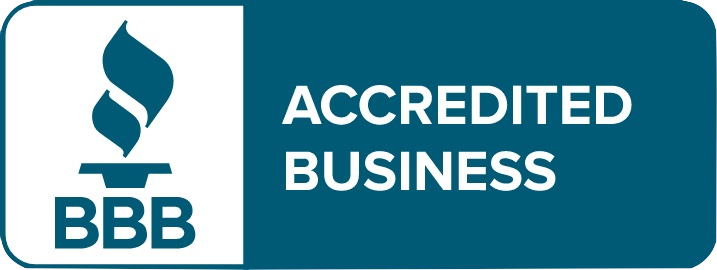Nobody launches their career anticipating any type of harassment – even though it’s shockingly prevalent in Canada’s workplaces.
According to a 2016 Statistics Canada Report, “Nineteen percent of women and thirteen percent of men reported that they had experienced harassment in their workplace in the past year. Workplace harassment includes verbal abuse, humiliating behaviour, threats to persons, physical violence, and unwanted sexual attention or sexual harassment” (1).
No one is safe from workplace harassment. As an example, the LGBTQ community is quite prone to it. According to Catalyst research, “Approximately 47% of LGB workers have experienced workplace harassment and/or violence based on their sexual attraction” (2). According to McInnes Cooper associate Ryan Baxter, employers must build new policies to protect LGBTQ workers from harassment (3).
“One of the most important things an employer can do to support trans employees in the workplace is to implement LGBTQ policies and provide visible support,” said Baxter (3).
“Employers should also update their employee orientation programs on discrimination and harassment to include gender identity and LGBTQ policies, and review all existing workplace policies to ensure they are gender-neutral,” he added (3).
#MeToo and Workplace Harassment
Tarana Burke launched the global #MeToo movement in 2017 which has opened dialogue about workplace harassment. In January of 2019, she spoke at Toronto’s 2019 Human Resources Professionals Association Conference (4).
She said filling a boardroom with women and minorities will not alone solve workplace harassment issues. This is because even women can turn a blind eye to harassment. Burke also called on men to be proactive and mentor women to lessen harassment (4).
Despite its start on social media, the #MeToo movement continues to set the stage for lessening workplace harassment. According to Canadian labour history professor Julie Guard, #MeToo hasn’t solved harassment, but has paved the way for change.
“The #MeToo ‘eruption’ is probably the most amazing thing that’s happened in the last century for women since the vote. It gives women new permission to object to being treated as sexual objects,” says Guard in a March 2019 Canadian Centre for Policy Alternatives article (5).
“I don’t think the #MeToo movement has solved the problem of sexual harassment, but there’s a new legitimacy for women to be able to object—and to get some credibility for saying things that have been happening for decades or years or weeks at their workplace” (5).
Receiving a Harassment Complaint
Once a harassment complaint is made, HR professionals are obligated to investigate the matter (6). An HR professional must decide if a harassment complaint will be dealt with internally or externally upon receiving it. This is done at their own discretion under the guidance of their department supervisors, workplace policies and more.
According to CPHR Alberta, the complainant and respondent should not work with each other until the investigation is completed. At this point in time, it’s important to gather any evidence from all people involved when available including CCTV coverage, text messages, emails and more (6).
Once you have received a written report from the complainant, make them aware that the respondent has the right to know that it’s been filed (7). Make sure you reassure the complainant that they will not face disciplinary action for seeking assistance (8).
Meeting Guidelines
Most harassment cases will require multiple meetings to record everyone’s detailed account of the complaint. The complainant, respondent and any witnesses should be interviewed. Each conversation should be closely monitored for any contradictions or items that don’t line up with another party’s version of events. Always schedule follow-up meetings to further clarify details. The complainant should be interviewed first. The HR professional should pre-plan questions and take thorough notes as they provide their account of what happened. After the meeting, the complainant can write a detailed report of what happened including any evidence that proves their story.
- A meeting with the respondent should be arranged next. Let them know before the meeting that a report has been filed and pre-plan any questions. Take thorough notes as the respondent describes their account of what happened. After the meeting, have the respondent write a detailed report of what happened including any evidence that proves their story.
- If there are any witnesses, now is the time to plan a meeting with each. Interview each witness independently. After the meeting, have each of them write a detailed report of what happened including any evidence that proves their story.
If there are any ethical doubts about arranging meetings, HR professionals can consult with the company’s lawyers, investigators or department supervisors. Be mindful of your tone of voice and communication style when working with each side. Make sure you treat the complainant with respect and compassion, that you remain calm with both parties, do not punish someone for complaining, look for any contradictions and write everything down (8).
When an HR professional has completed the interview process, appropriate action must be taken if the respondent has been proven guilty. They could face a number of different consequences ranging from a written warning to termination in worst-case scenarios (8). Work with your HR team and anyone else who can legally guide you to determine the appropriate consequence in your workplace.
__
Workplace harassment is widespread, yet offers a great opportunity for HR professionals to improve their prevention strategies. A good human resources team learns from their mistakes and will create a work environment that’s conducive to trust and cooperation.
Citations
-
https://www150.statcan.gc.ca/n1/en/pub/75-006-x/2018001/article/54982-eng.pdf?st=sD0oDRnO
-
https://www.catalyst.org/research/lesbian-gay-bisexual-and-transgender-workplace-issues/
-
https://www.hcamag.com/ca/news/general/transgender-jobseekers-face-barriers-to-employment/128017
-
https://www.hrreporter.com/columnist/editor/archive/2019/01/30/workplace-culture-shift-is-heart-work-says-metoo-originator/
-
https://www.policyalternatives.ca/publications/monitor/women-rights-and-work%E2%80%94-1919-metoo-movement
-
http://www.cphrab.ca/how-conduct-investigation-workplace-harassment
-
https://www.exec.gov.nl.ca/exec/hrs/working_with_us/harassment_free_workplace.html
-
https://www.nolo.com/legal-encyclopedia/guidelines-handling-discrimination-harassment-complaints-29490.html




